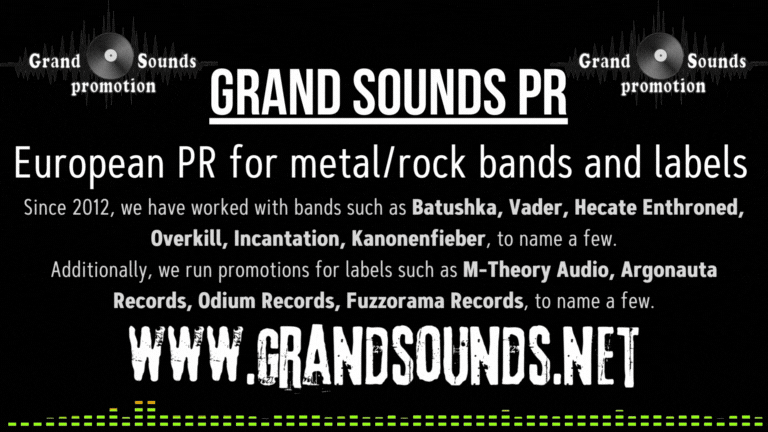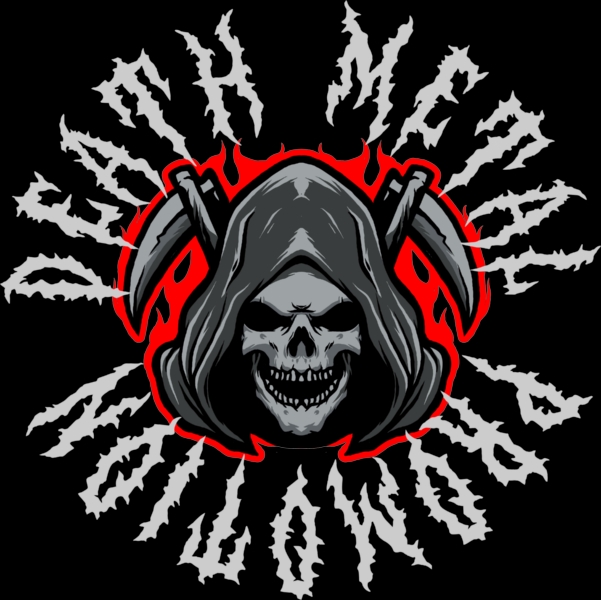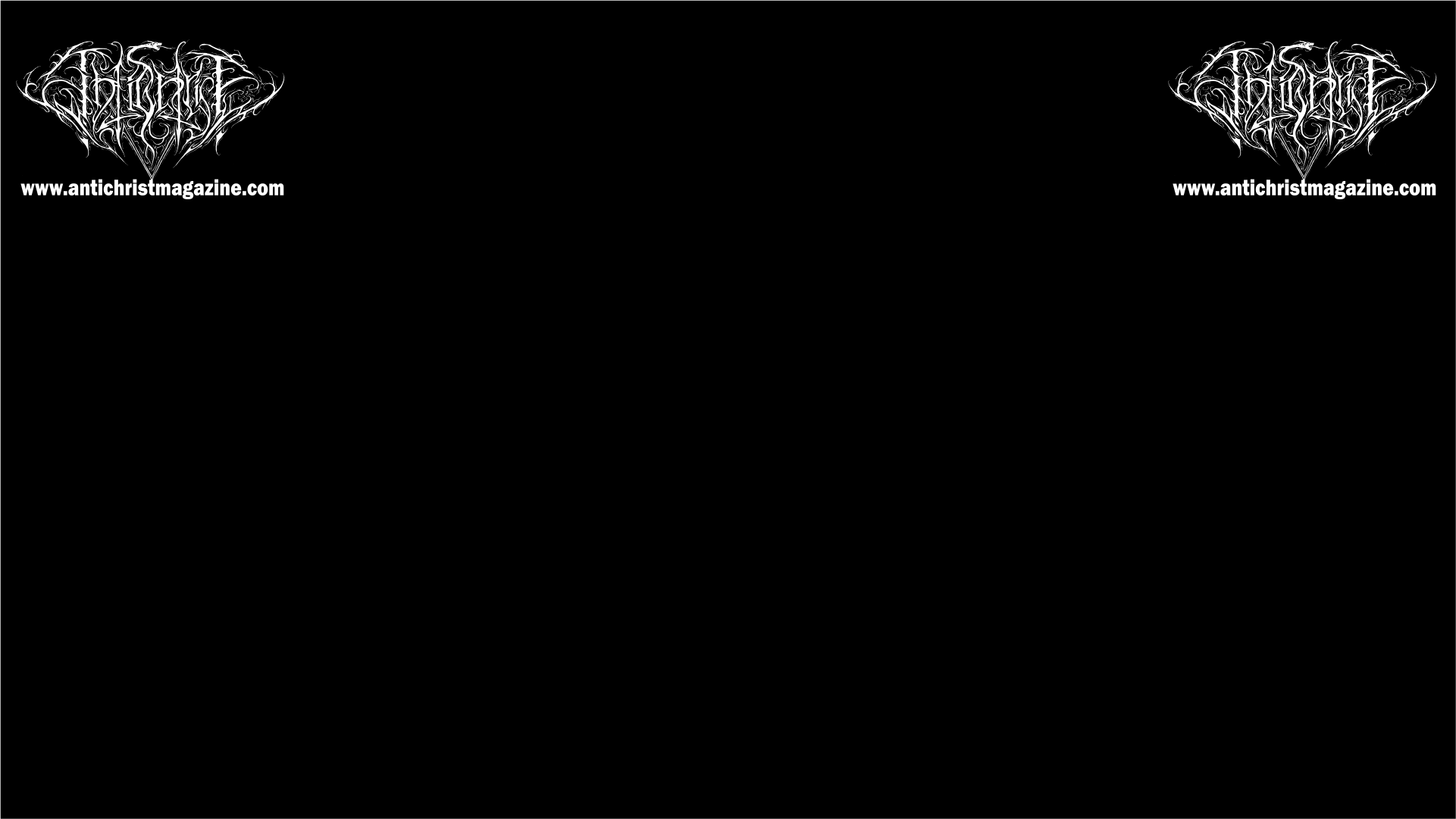 Bottomless was formed by experienced musicians. How has this diverse background influenced the sound and creative process of Bottomless?
Bottomless was formed by experienced musicians. How has this diverse background influenced the sound and creative process of Bottomless?
True, we have known each other for a long time. Sara and me are in a relationship since 2017, whereas I’ve been playing with David since 2004, so that’s basically my entire life throughout different bands and projects. Being psychotically devoted to Sabbath since our early teens – and I mean the three of us – and having welcomed at various degrees their spontaneous influence into whatever we’ve done so far, in 2016 we just felt like we wanted to have a full-on, heavy doom metal band so that we could throw in all of this and more. In Bottomless there’s no influence from our other projects, really.
Your self-titled debut album was released in 2021, showcasing a commitment to traditional doom metal with a ’70s edge. How do you feel your sound has evolved since then, especially with the release of your second full-length album, The Banishing?
My biggest problem on album n.1 was finding my own melodic voice. Alas, I am no Ronnie James Dio, so I had to find a suitable way to breathe some life into our songs while being forced to stick to my limited, baritone-ish extension. It took me a while to work it out, but now I’m much more confident. I know what is and what should never be about my voice and I think this shows on the new album. Songwriting-wise, we wanted to have fast rockers, slow dirges, mid tempos, cleans, even an acoustic ballad. I firmly believe this is our strongest offering yet and that’s because it’s much more varied and focused compared to our first album.
Can you delve deeper into the conceptual aspects of the album and how these themes are explored in your music?
The themes of death’s magic, the fading of memories and the exploration of the darkest corners of our souls are all there but there’s some cinematic influence, too. For instance, for the song “By the Sword of the Archangel” I drew a lot of visual inspiration from Murnau’s 1926 Faust – Eine deutsche Volkssage, an expressionist mute masterpiece with a simply epic battle between the forces of good, embodied by Archangel Michael, and Mephisto the tempter. Generally speaking, I don’t like to talk a lot about my lyrics and I believe that listeners should figure their way around them and use their own imagination to decript what they read. What I can say is that I did open my heart an awful lot on a couple of numbers, that’s for sure.
The shift in sound on The Banishing is described as moving toward the epic, evil, and dark. What inspired this relatively dramatic shift, and how did you approach incorporating these elements into your music while still retaining your rootsy doom sound?
To quote Saint Vitus: it’s a dark world! You don’t have to look too far to find some inspiration for evil and sombre music. Most bands “in our genre” out there are either trying to rip off the stoner side of Sabbath or they just take some sonic elements off the doom metal domain in order to place them some place else. I respect everybody’s opinion, but sound-wise it’s not what we’re trying to do as a band. Though we have had some of the most influential doom and dark sound acts here in Italy, Bottomless is about achieving quite different atmospheres. Nowadays, we feel closer to Manilla Road’s slower side (TheVeils of Negative Existence!) than ever.
The album features tracks like “Guardians of Silence,” “By the Sword of the Archangel,” and the acoustic ballad “Drawn Into Yesterdays.” Can you share some insights into the songwriting process for these tracks and the emotions or stories you aimed to convey through them?
I write demos at home for the rest of the band to listen to so they can get their picture of the songs. I am mostly inspired when there are no recording devices at hand and often in absolutely random situations (like on plane flights or when I’m by the sea), so I have a hard time remembering riffs and bits ahah! As for the lyrics, “Guardians of Silence” is a big epic tale about a trip into death’s realm and so is another track called The Great Unknown, although under different terms. “Drawn Into Yesterdays” is the most painful one for me. I have ocean-size holes in my childhood memories and that song is about trying to remember stuff that just isn’t there anymore.
How do you create emotional atmospheres within your music, and what do you hope listeners will experience and feel when they immerse themselves in your sound?
We hope that listeners get carried away by this dark stream of sound. We love heavy rock and metal when they drag you to places you don’t know.
Your music draws influence from classic bands like Candlemass, Solitude Aeternus, and Black Sabbath. How do you balance paying homage to these iconic bands while still injecting your own unique identity into your music?
We adore all the bands you’ve mentioned from here to eternity. Sometimes it’s hard not too sound too literal and you have to go back to some of your records to find out that, yes, that one good idea you had actually came from a Cirith Ungol, Mercy or Nemesis riff! Anyway, this form of music feels very natural to us. When I write I simply go into “Bottomless mode” and see where the notes take me.
The production of The Banishing was done on tape, giving it an authentically analog sound. What drew you to this approach, and how do you feel it enhances the overall listening experience?
Daniel of Mal DeTesta studio did a great job with that. He’s got some very cool old equipment, like an old Italian mixer by Lombardi, analog effects and a tape recorder, too. The entire album was mastered on tape because of the harmonic distortion you get with it, which is absolutely unique and very hard to achieve with modern-day softwares. When Daniel transferred the songs onto reel we felt like they just sounded right in a way one can’t define. It’s a dark sounding record and it’s a big fuck off to the crystal clear productions of today.
Bottomless seems to embrace a DIY approach to their music, recording, mixing, and mastering the album in a few sessions. Can you discuss the advantages and challenges of this hands-on approach and how it contributes to the authenticity of your sound?
A friend who’s played in a great old band once told me that albums are best when you’re in a hurry, drunk or stoned and with very little money, ahah! Pink Floyd and Alan Parsons would tell you otherwise but I do believe that, as far as this kind of music is concerned, the one thing that matters is rehearsing a lot, which is difficult for us since we don’t live in the same area. Other than that, spending a lot of time and money just to fiddle around with pan pots and microphones is basically useless for me. I like records when they’re a photography of who you are in the moment. Just go in, do the best that you can and then get out ahah!
The album cover art for The Banishing is visually striking. Can you share the story behind the artwork and how it complements the themes and music of the album?
Thank you very much! Early last year we went to this abandoned, unfinished church in the Vicenza area with our friend Marco Zanin, bass player in Messa. He is an amazing photographer. He’s one of those artists that just takes awesome shots in whatever situation with whatever he’s got. He took both digital and analog shots but the one you see on the front cover is an analog one and you can clearly tell by the grainy quality of the picture.
How do you create and maintain the atmospheric qualities that captivate listeners, and how important is it for you to evoke a specific mood or feeling through your music?
I don’t know if we can create and maintain an atmosphere but I’m glad you brought up that term, because in the end atmosphere is all that matters to us. No shiny production, big guitar solo or technical drum fill will ever make a song great. They can only contribute this much. What’s pivotal in rock music and, namely, heavy metal and doom metal is atmosphere. We hope to conjure some and we do our best to put out inspired music, although in a very well-defined framework.
The doom metal genre often explores darker and introspective themes. How do you personally connect with these themes, and what impact do you hope your music will have on listeners who resonate with these emotional and philosophical concepts?
These elements have always been with us, one way or another. Sara, for instance, has been mad about Egyptian history and its death cult her entire life. The first photo I ever took when my mum lent me her camera was that of a British graveyard while on a summer vacation in 1996. Darkness resonates with us and this music is a perfect vehicle to convey it. Emotions have their own unspeakable philosophy.
The underground metal scene has its own dedicated following. How do you navigate this scene as a band, and what role do you feel Bottomless plays in keeping the spirit of heavy, somber metal alive?
Our only role is to push ourselves into making the best songs we’re capable of. We love what we do, we put a lot of passion and effort into it and we are not going to stop. Be forewarned…
If you really would like to support Antichrist, you can just Share our article.
You can also support Antichrist by sending a couple bucks to cover some webhosting expenses. =>> PayPal




